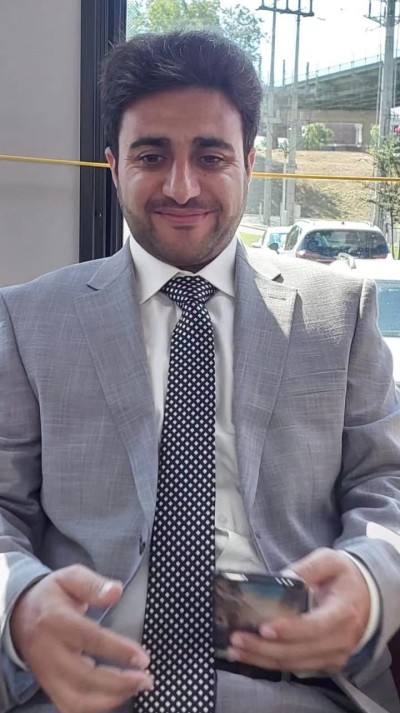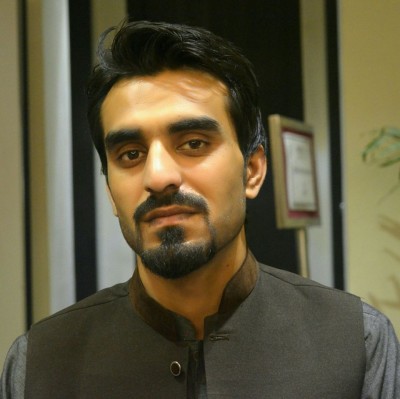Each course learning outcomes are mapped with the PLOs of BS Mining Engineering Program offered at KIU Gilgit. Sample CLO – PLO Mapping of some of the courses are presented in this section as a reference:
Mining Engineering Fundamentals: CLOs – PLOs Mapping
| CLO No. |
Description |
Taxonomy Domain |
PLOs |
| 1 |
Define different terminologies used in mining engineering. |
C1 |
1 |
| 2 |
Explain the phases/life-stages, unit operations of mining and different types of mine support systems |
C2 |
1 |
| 3 |
Discuss different mining methods and the basic theory of auxiliary operations in mining |
C2 |
1 |
Engineering Mechanics : CLOs – PLOs Mapping
| CLO No. |
Description |
Taxonomy Domain |
PLOs |
| 1 |
Solve problems involving direct application of the concepts of Rigid Body Mechanics (such as Resolution of a force, Moment, Couple) |
C3 |
1 |
| 2 |
Determine Resultant force and Geometrical properties of Planar systems. |
C4 |
2 |
| 3 |
Analyze Statically determinate Planar force systems to calculate reactions, internal, force and displacements |
C4 |
2 |
Mechanics of Materials: CLOs – PLOs Mapping
| CLO No. |
Description |
Taxonomy
Domain |
PLOs
|
| 1 |
Explain different types of stresses, strains, material constants mechanics of deformable solid bodies, load-deflection curve. |
C2 |
1 |
| 2 |
Apply theory of simple stress, beam theory to calculate stresses/strains in structural members |
C3 |
2 |
| 3 |
Evaluate load carrying capacities of structural members subjected to various loading conditions |
C5 |
2 |
Principle of Explosive Engineering: CLOs – PLOs Mapping
| CLO No. |
Description |
Taxonomy Domain |
PLOs |
| 1 |
Define various terminologies related to mine explosives and blasting |
C1 |
1 |
| 2 |
Describe properties and classification of explosives |
C2 |
1 |
| 3 |
Design blast for surface and underground mine |
C5 |
3 |
Computer Applications in mining (LAB): CLOs – PLOs Mapping
| CLO No. |
Description |
Taxonomy Domain |
PLOs |
| 1 |
Define computer information technology vocabulary, Concepts and skill |
C1 |
1 |
| 2 |
Communicate effectively in both verbal and written form. |
A2 |
10 |
| 3 |
Practice on various tasks in academics as well as in Mining engineering industry using computer |
P3 |
12 |
Differential Equations: CLOs – PLOs Mapping
| CLO. No |
Description |
Taxonomy Domain |
PLOs |
| 1 |
solve different types of differential equations by understanding fundamental methods and techniques |
C3 |
2 |
| 2 |
develop models based on differential equations for different engineering problems |
C3 |
3 |
Rock Mechanics: CLOs – PLOs Mapping
| CLO No. |
Description |
Taxonomy Domain |
PLOs |
| 1 |
Discuss underground problems involving application of rock Mechanics (stress and strain) |
C2 |
1 |
| 2 |
Analyze stress distribution around single and multiple openings. |
C4 |
4 |
| 3 |
Evaluate the excavation under different conditions of stress and deformation. |
C6 |
3 |
Numerical Methods in Computing: CLOs – PLOs Mapping
| CLO. No. |
Description |
Taxonomy Domain |
PLOs |
| 1. |
Describe different numerical techniques in interpolation, differentiation, integration, eigenvalues and solution of algebraic and differential equations |
C2 |
1 |
| 2. |
Apply numerical techniques for solution of engineering problems |
C3 |
2 |
Probability and Statistics: CLOs – PLOs Mapping
| CLO. No. |
Description |
Taxonomy Domain |
PLOs |
| 1. |
Acquire the basic concept of Statistics and probability and their need in engineering |
C1 |
1 |
| 2. |
Apply the rules of Probability and Statistics to understand different engineering problems |
C3 |
2 |
| 3. |
Analyze various engineering problems through probabilistic techniques |
C4 |
2 |
Applied Thermodynamic: CLOs – PLOs Mapping
| CLO. No |
Description |
Taxonomy Domain |
PLOs |
| 1. |
Explain basic ideas, concepts and laws of Thermodynamics |
C2 |
1 |
| 2. |
Discuss the fundamentals and applications of different equipment’s (air compressor, I.C engine, refrigerator etc.) |
C2 |
1 |
| 3. |
Solve problems related to thermodynamics |
C3 |
4 |
Computer Programming (LAB): CLOs – PLOs Mapping
| CLO. No |
Description |
Taxonomy Domain |
PLOs |
| 1. |
Identify the fundamental concepts of computing and basic computer programming essentials |
C1 |
1 |
| 2. |
Demonstrate the ability to formulate a computer program for a given scenario in engineering |
P4 |
5 |
| 3. |
Develop mini projects related to engineering |
C5 |
5 |
Structural Geology: CLOs – PLOs Mapping
| CLO. No |
Description |
Taxonomy Domain |
PLOs |
| 1. |
Identify different geological structures of rocks |
C1 |
1 |
| 2. |
Describe the importance of geological structures in engineering design. |
C2 |
1 |
| 3. |
Analyze the effects of various geological structures on different engineering projects |
C4 |
4 |
Underground Mine Design: CLOs – PLOs Mapping
| CLO. No |
Description |
Taxonomy Domain |
PLOs |
| 1. |
Explain different techniques of rock mass classification systems used for qualitatively and quantitatively assessment of rock mass environment and underground mining methods |
C2 |
1 |
| 2. |
Select a suitable underground mining method for given rock/ore conditions |
C6 |
4 |
| 3. |
Design of support systems for underground mine |
C5 |
3 |
Mine Surveying-I (theory): CLOs – PLOs Mapping
| CLO No. |
Description |
Taxonomy Domain |
PLOs |
| 1 |
Explain basic working principles of surveying and leveling instruments |
C2 |
1 |
| 2 |
Apply basic surveying and leveling principles. |
C3 |
1 |
| 3 |
Solve problems related to surveying and leveling |
C3 |
2 |
Geostatistical Ore Reserve Estimation: CLOs – PLOs Mapping
| CLO No. |
Description |
Taxonomy Domain |
PLOs |
| 1 |
Describe various steps of mineral resource estimation |
C2 |
1 |
| 2 |
Differentiate between classical statistics and geostatistics |
C4 |
4 |
| 3 |
Compare and contrast various aspects of linear geostatistical techniques for resource estimation of recoverable reserves |
C4 |
1 |
Mine Economics and Management: CLOs – PLOs Mapping
| CLO No. |
Description |
Taxonomy Domain |
PLOs |
| 1 |
Describe the basic differences between mining and other businesses, and principles of human and project management. |
C2 |
11 |
| 2 |
Apply macro and micro economic principles related to metal and mine economics and management principles to plan and schedule project operations |
C3 |
11 |
| 3 |
Analyze various capital budgeting methods for Economic Valuation of Mineral Deposits |
C4 |
4 |
Mineral Processing-I (Theory): CLOs – PLOs Mapping
| CLO No. |
Description |
Taxonomy
Domain |
PLOs |
|
| 1 |
Explain mineral processing terminologies and techniques used for preparation of mineral/ore sample, |
C2 |
1 |
|
|
| 2 |
Describe different gravity concentration methods, classification, metallurgical accounting and control |
C2 |
1 |
|
|
|
| 3 |
Solve different problems related to comminution, PSD, classification, gravity concentration methods and MAAC |
C3 |
4 |
|
Mineral Processing-II: CLOs – PLOs Mapping
| CLO No. |
Description |
Taxonomy
Domain |
PLOs |
| 1 |
Explain different concentration methods, liquid solid separator |
C2 |
1 |
| 2 |
Assess and Select the best concentration method for mineral/ore |
C6 |
4 |
| 3 |
Design appropriate flow sheet for concentration of mineral/ore |
C5 |
3 |
Mine Ventilation: CLOs – PLOs Mapping
| CLO. No |
Description |
Taxonomy Domain |
PLOs |
| 1. |
Explain the basic components of mine ventilation systems |
C2 |
1 |
| 2. |
Apply engineering control procedures for handling the dust and gas hazards in a mine |
C3 |
4 |
| 3. |
Design ventilation systems applying natural and auxiliary ventilation principles |
C5 |
3 |
Mine Hazards and Safety: CLOs – PLOs Mapping
| CLO No. |
Course Learning Outcomes (CLOs)
|
Taxonomy Domain |
PLOs |
|
1 |
Explain different types of hazards and occupational diseases in mining operations |
C2 |
1 |
|
2 |
Apply different remedial measuring and management techniques for various mining hazards |
C3 |
6 |
Mining Laws: CLOs – PLOs Mapping
| CLO No. |
Description |
Taxonomy Domain |
PLOs |
| 1 |
Define the basic terminologies related to mining laws |
C1 |
6 |
| 2 |
Paraphrase different sections of prevailing Mines Act, rules and regulations there under |
C2 |
6 |
| 3 |
Apply the relevant mining laws in a given situation |
C3 |
8 |
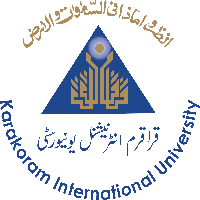


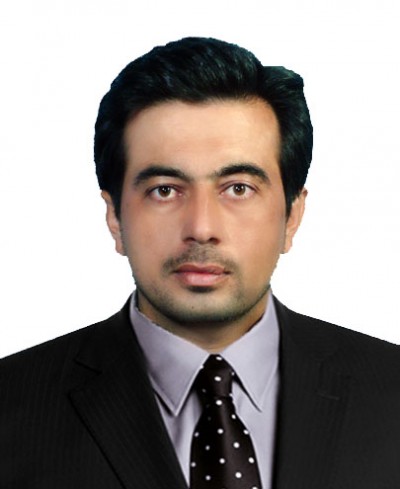
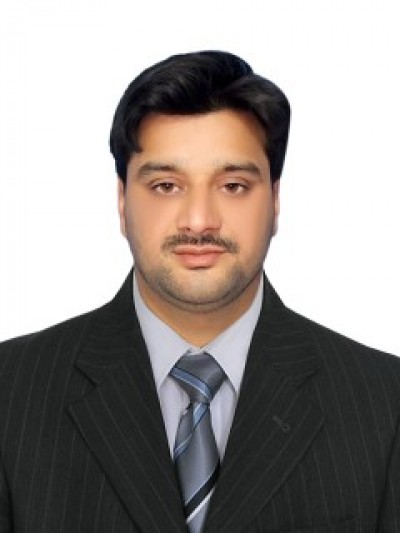
_(1).jpg)

